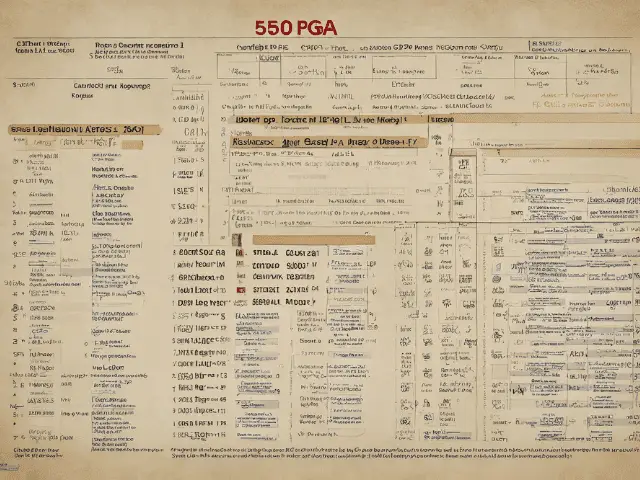
Introduction
Grade Point Average (GPA) is a widely recognized metric used in the education system to assess and compare the academic performance of students. Most people are familiar with the conventional 4.0 GPA scale, where an A represents a score of 4.0, a B is 3.0, and so on. However, there’s also a GPA scale that exceeds 4.0, known as a 5.0 GPA. In this article, we will delve into what a 5.0 GPA is, how it differs from the traditional scale, and the implications it has for students in the academic world.
Understanding the Traditional 4.0 GPA Scale
Before we explore the 5.0 GPA scale, let’s first understand the standard 4.0 GPA scale, which is prevalent in many educational systems, especially in the United States. In the 4.0 scale, letter grades are converted into numerical values, and the GPA is calculated by averaging these values.
- A = 4.0
- A- = 3.7
- B+ = 3.3
- B = 3.0
- B- = 2.7
- C+ = 2.3
- C = 2.0
- C- = 1.7
- D+ = 1.3
- D = 1.0
- D- = 0.7
- F = 0.0
To calculate your GPA on the 4.0 scale, you sum up the numerical values of your grades and divide by the number of courses.
For example, if you received grades of A, A-, B+, and B in four different courses, your GPA would be calculated as follows:
(4.0 + 3.7 + 3.3 + 3.0) / 4 = 14.0 / 4 = 3.5
So, in this case, your GPA on the 4.0 scale is 3.5.
What Is a 5.0 GPA?
A 5.0 GPA is a GPA scale that extends beyond the standard 4.0 scale. It is often used in high schools that offer advanced or honors courses, where students can earn more than the maximum 4.0 GPA through weighted grades. The main purpose of a 5.0 scale is to recognize the rigor of advanced courses and provide students with an opportunity to achieve a higher GPA than they could on a 4.0 scale.
In a 5.0 GPA scale, the grading system typically incorporates additional points for advanced or honors courses. Here’s a common way a 5.0 GPA scale is structured:
- A = 5.0
- A- = 4.7
- B+ = 4.3
- B = 4.0
- B- = 3.7
- C+ = 3.3
- C = 3.0
- C- = 2.7
- D+ = 2.3
- D = 2.0
- D- = 1.7
- F = 0.0
The extra points for advanced courses, such as honors or Advanced Placement (AP) courses, are what enable students to achieve a GPA higher than 4.0. For instance, if a student earns an A in an AP course, they receive 5.0 instead of the standard 4.0.
Calculating a 5.0 GPA can be more complex than a 4.0 GPA because it requires factoring in the additional weight given to advanced courses. The GPA is still calculated by averaging the numerical values of the grades, but you must consider the weighted grades if you’ve taken advanced courses.
The Implications of a 5.0 GPA
Having a 5.0 GPA on your academic record can have several implications for students:
- Competitive Advantage: A 5.0 GPA can provide students with a competitive advantage when applying for colleges and universities. Admissions committees often consider a student’s GPA as a crucial part of the application.
- Scholarships: A high GPA, especially a 5.0 GPA, can make students eligible for a wide range of scholarships and financial aid opportunities. Many scholarships prioritize academic excellence.
- Academic Recognition: Achieving a 5.0 GPA is a significant accomplishment and is often recognized with awards and honors within the school or community.
- College and Career Opportunities: A high GPA can open doors to more college and career opportunities. It may qualify students for admission into prestigious institutions and make them competitive candidates for various careers.
- Boosted Self-Confidence: Earning a 5.0 GPA can boost a student’s self-confidence and encourage them to continue pursuing academic excellence.
Challenges and Considerations
While a 5.0 GPA can be a valuable achievement, it comes with its own set of challenges and considerations:
- Rigorous Courses: To achieve a 5.0 GPA, students often need to take challenging courses, which can be demanding and require strong time management and study skills.
- Stress and Pressure: The pursuit of a high GPA can lead to stress and academic pressure, affecting students’ mental and emotional well-being.
- Balance: Achieving a 5.0 GPA may require students to strike a balance between academics and extracurricular activities, personal life, and overall well-being.
- Expectations: Once students attain a 5.0 GPA, they may feel pressured to maintain it, which can be stressful and lead to a fear of failure.
Conclusion
A 5.0 GPA is an extended grading scale that rewards students for taking advanced or honors courses. It provides students with the opportunity to earn a GPA higher than the standard 4.0 scale. While a 5.0 GPA can open doors to numerous educational and career opportunities, it also comes with its own set of challenges, including academic rigor, stress, and high expectations. Ultimately, the pursuit of a 5.0 GPA should be balanced with students’ overall well-being and personal growth, as education is not solely defined by numbers but by personal growth and development.












